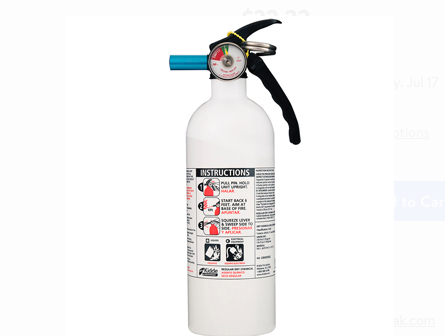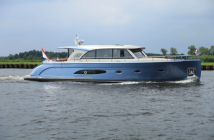Here’s a story about on board fire extinguishers that’s important to all cruising boat owners from Practical Sailor. It tells you how many you need, where to put them, and how to care for them.
By Frank Lanier
While portable dry chemical fire extinguishers are a common sight aboard any sailboat, their installation, upkeep, and use is almost sinful. During marine surveys I’ve asked boat owners how long they think a typical BC-I portable unit will last when fighting a fire and have received answers ranging from “about 20 minutes” to “until the fire is put out”—scary, when you consider that the correct answer is around 10 seconds of continuous use.
Routine fire extinguisher inspections are crucial to ensure proper operation when needed. Your first check should be verifying you have the correct number and type of Coast Guard approved extinguishers onboard for your particular boat (see table). These standards are the MINIMUM and it’s always good to have additional units onboard. Extinguishers should be located in easily visible locations near the galley, engine compartment and all living spaces. A good rule of thumb is that you should never have to travel more than half the length of your boat to reach an extinguisher. Although not preferred, if you have to mount an extinguisher in a locker or cabinet, be sure to install a label or placard outside the cabinet indicating a fire extinguisher is located inside.
A common problem I see is having the correct number of fire extinguishers onboard, but locating all of them below decks where a galley fire could prevent access from the helm. Sailboats are particularly susceptible in this regard, since the galley is usually near the companionway. Always mount an extinguisher in the cockpit area, where it’s available to the helmsman the minute a fire is discovered.
Unless you have a fixed, automatic extinguisher installed in the engine compartment, installation of a “fire port” is highly recommended. A fire or discharge port allows you to discharge a suitably sized “clean agent” portable fire extinguisher (i.e. CO2, Halotron, FM-200, FE-241) directly into the engine compartment without opening any access panels. Read more:




